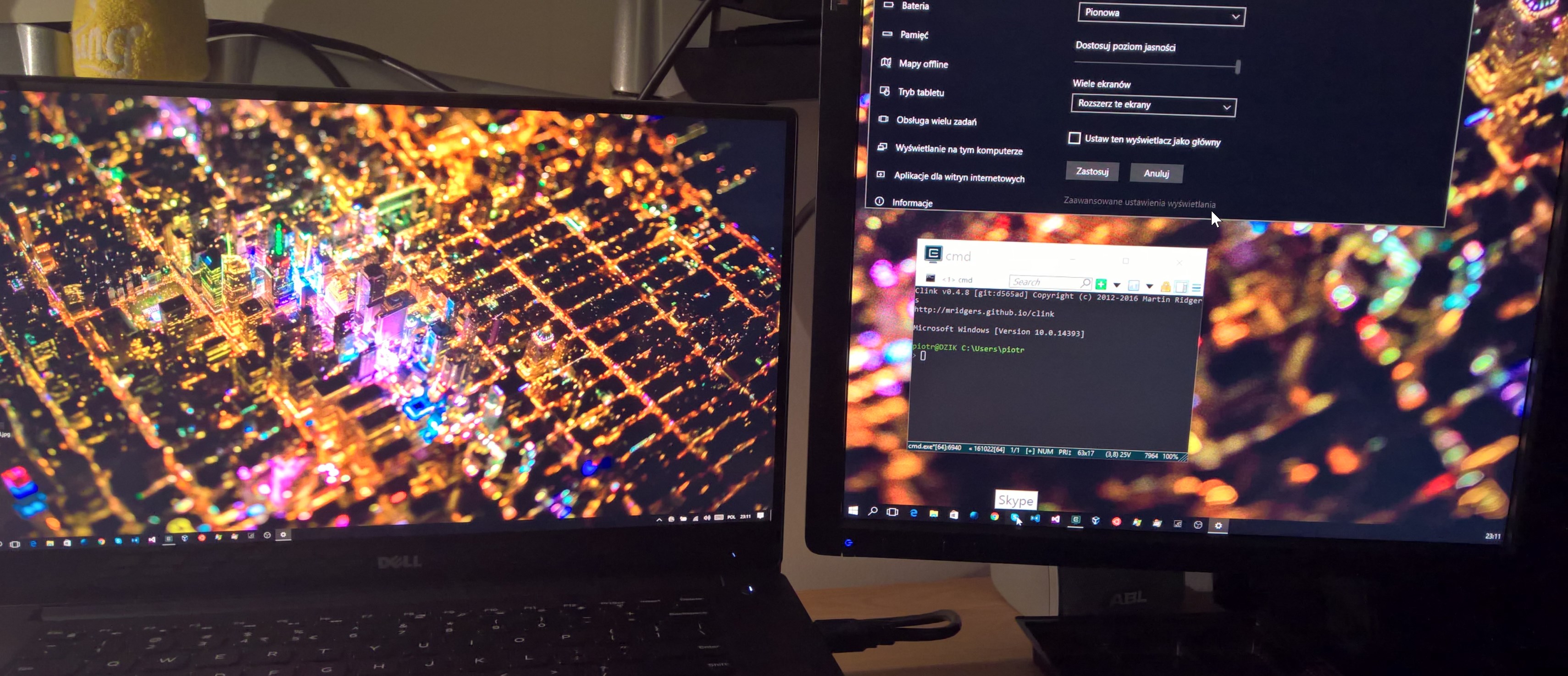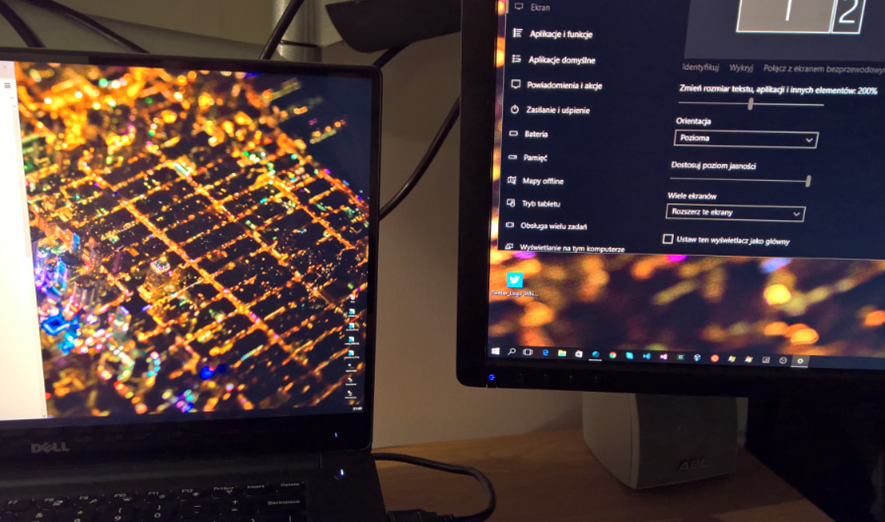Although Windows 10 has significantly improved support for high density displays I do have some strange issue, that I cannot confirm it’s a bug in my setup, or this is something not fixed yet.
My setup looks like:
- Primary screen: 3840×2160 in 15,6″ (scale 200%)
- Secondary screen: 1920×1200 in 24″ (scale 100%)
Problem sits with a moment, when window from one screen is moving to an other. If whole window sits on either first of second screen then everything looks fine. Problem is when one window is rendered on two screens.
Of course this problem is far more complex, than just scale window to keep physical properties, nevertheless maybe there is a solution for it.
During a research I’ve found a couple of interesting articles about it:
- http://cmdrkeene.com/dpi-scaling-with-multi-monitor
- https://blogs.msdn.microsoft.com/danchar/2014/11/01/hi-dpi-multi-mon-with-surface-pro-3-dpi-scaling-tweaks/
Ideally a solution should not involve changing down a resolution of my primary screen.
An other problem that I started to observe is a label (balloon-tip) over Skype icon. It’s unnaturally big. What is strange, a label over Windows search is perfectly fine.
Not only labels, but icons:
This situation gets fully mirrored when I set my primary display to 1920×1200 (100%), and then icons and labels on HiDPI display get twice smaller.
Possible explanation might be that some component from Windows 10 is not aware about per display scale, and it applies scale form the primary display everywhere.
Will see what Microsoft Community will say about it.



What you see is normal; the program will render to the pixel density of whichever monitor is showing the majority of the program’s window (any amount over 50.0%).
It would be AWESOME to see the desktop window manager, the engine behind the Aero effects and desktop graphics acceleration, used to render the scale factor of both screens simultaneously, but that would surely be a challenge.
Thank you for the confirmation, at some point I started to dig into registry and change values directly. At some point I was not sure what is current behavior.
Windows 10 itself handles this better and better, maybe some internal components like:
– desktop icon manager
– task bar balloon tip manager
Are not aware about per monitor DPI.
This problem it’s interestingly complex when all scenarios are considered.
[…] This is an extension to my previous post about this problem: https://trzeci.eu/windows-10-support-of-hi-dpi-and-low-dpi-displays/ […]